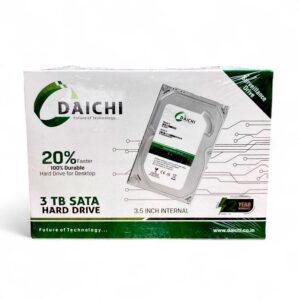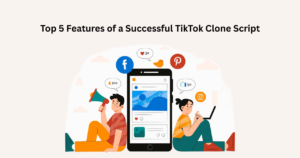The CIO’s Role in Selecting a Custom Software Development Vendor
Ever wonder why some companies nail their digital transformation while others end up with software that’s more headache than hero?
The difference often comes down to one key player: the CIO who is taskes with the job of selecting the right custom software partner for enterprises. But this is not just another task on their to-do list. It is a high-stakes call because it directly impacts user experience and ultimately business outcomes.
Consequently, the CIO responsibilities in IT procurement go way beyond just looking at tech specs. It’s about finding a software development partner who understands the business, delivers on time, and builds solutions that last.
So, how to get this right? This guide explores the CIO’s role in software outsourcing, breaks down smart strategies, and shares what really works in the enterprise software development process.
Why the CIO Role in Software outsourcing Is Bigger Than Ever
Gone are the days when CIOs just kept the servers humming. Today, they’re part strategist, part innovator, and part dealmaker, steering enterprises through a digital jungle. To select the right software partner, the CIO must juggle business goals, tight timelines, and a dizzying array of vendors—all while dodging risks like budget overruns or security gaps. Remember, approximately 70% of software projects fail to deliver expected value, because of a mismatched custom software development company. Do you see how much rides on one decision?
Today, software development and technology are moving at a rapid speed, with trends like AI, cloud-native apps, and hybrid work shaking things up. CIOs need to pick partners who are leading this race within a tight budget. Whether it’s modernizing a creaky legacy system or launching a game-changing app, the right vendor turns vision into reality. So it is essential that the CIO does it right.
When to Opt for Enterprise Software Development services
Not every project needs a custom software development company. Off-the-shelf tools work fine for standard needs. But as your business scales, it will hit a point where generic software will feel like a square peg in a round hole, it’s time to look outside. Common triggers include:
- Upgrading old systems that can’t keep up.
- Building integrations with CRMs, ERPs, or cloud platforms.
- Creating new digital products to drive revenue.
- Developing unique IP to outsmart competitors.
These are the moments when a software development partner becomes a lifeline and the CIO vendor selection strategy is what makes or breaks the outcome.
Why Getting Vendor Selection Wrong Hurts
A bad vendor choice isn’t just a delayed project—it’s a cascade of pain. Think missed market windows, budgets blown by 30%, or apps that crash under pressure. On the flip side, the right enterprise software development services deliver solutions that scale seamlessly, prioritize security, and spark innovation. Recent surveys show well-chosen vendors boost project success rates by 40%.
The stakes are high, and CIOs are at the forefront. They must adopt a smart approach to turn a risky bet into a strategic win.
What CIOs Need to Do to Pick the Right Vendor
Line Up with Business Goals
The best vendors don’t just code—they solve problems. Start by getting crystal clear on what the business needs.
- Is it faster customer onboarding?
- Streamlined operations?
- A new revenue stream?
Pick a vendor who understands your supply chain pain points to cut delivery times by 20%. Map out exclusive success metrics and audit your internal skills for gaps before shopping for software development solutions.
This step sets the stage. Without it, even the most adept vendor can miss the mark. Half of the custom development projects fails can be tied back to fuzzy goals.
Nail Down Requirements
Vendors aren’t mind readers. Spell out what the project needs:
- Tech stack (e.g., Python, AWS)
- User workflows
- Must-have like GDPR compliance
- Scalability
- Upfront security
This will ensure your app meets applicable regulations. Further, maintaining clarity in your app’ technical, functional, and non-functional needs requirements will cut misalignment by 25%. This clarity helps vendors deliver enterprise software development services that actually fit.
Build a Scorecard for Vendors
Comparing vendors can be quite overwhelming but having a solid evaluation framework in advance will help keep things sane. Score shortlisted vendors on their:
- Technical chops (e.g., experience with microservices or AI).
- Industry know-how (e.g., healthcare, fintech).
- Project management style (Agile or Waterfall).
- Communication skills.
- Support after launch.
Using this approach will boost success rates by 30%.
Weigh In-House Development vs Custom Software Vendor
Should you build in-house or outsource? It’s a big call. In-house gives control, but burns time and money on hiring. Outsourcing scales fast but shares responsibility, freeing in-house resources to focus on other essential things, launching apps faster and improving business revenue.
Data shows 65% of enterprises lean toward vendors for speed and expertise. Hybrid models—using in-house for sensitive IP and vendors for heavy lifting—work for complex projects.
Plan for Scale and Security
Future-proofing matters. A vendor needs to deliver software development solutions that grow with the business and stay secure. Security is non-negotiable—vendors must meet standards like SOC 2 or HIPAA and come with the required compliance certifications.
Ask about long-term support and risk management. This ensures apps don’t buckle under growth or threats.
Pitfalls to Dodge When Making the Selection
Falling for Flashy Demos
Vendor pitches can dazzle, but shiny portfolios don’t always mean enterprise-grade results. Dig deeper—ask for live system access or talk to tech leads. About 20% of projects fail due to unverified claims.
Ignoring Cultural Fit
A vendor’s work style needs to click with yours. For example, an offshore software development company with a very rigid hierarchy will slow decisions. Clear communication and shared values fix this. Cultural mismatches trip up 25% of projects, industry data shows.
Small Agency vs Enterprise-Level Software Vendor
Small agencies bring agility but may lack the muscle for big projects. Enterprise vendors offer structure but can feel stiff. Match vendor size to project scope—60% of enterprises prefer enterprise vendors for complex needs.
Skimping on Security
Security lapses can sink an app. Insist on DevSecOps and compliance expertise. Security issues hit 15% of outsourced projects so be proactive and choose a vendor who prioritizes app security from the beginning.
Getting Locked In
Proprietary tools can trap you with a vendor. Open standards and clear contracts reduce lock-in risks by 20%, according to industry insights.
How to Pick a Vendor Like a Pro
Here’s a practical game plan for nailing CIO vendor selection strategy:
- Know the Business: Work with stakeholders to define problems, metrics, and gaps. End-user input is gold.
- Set Clear Specs: Detail tech, functional, and security needs upfront. Use RFPs to keep vendors focused.
- Verify Antecedents: Check portfolios, talk to clients, and test live systems. Look for enterprise software development expertise.
- Match Culture: Pick vendors who communicate openly and align with your workflow.
- Plan for Growth: Ensure solutions scale and stay secure with SLAs for support.
An expert and experienced custom software development company can make this seamless. For a fintech app, prioritize security expertise; for a customer portal, focus on UX. opt for pilot projects as they can slash risks by 30%, based on client experiences.
Wrapping It Up
The CIO’s role in software outsourcing is not just about picking a custom software development company—it’s about building a digital future that drives growth. Get it wrong, and you’re stuck with delays or duds. Get it right, and you’ve got custom software development solutions in New York that scale, secure, and spark innovation. Use a smart CIO vendor selection strategy, vet vendors like a pro, and partner with a custom software partner for enterprises that gets your vision. The result? Software that doesn’t just work—it wins.












